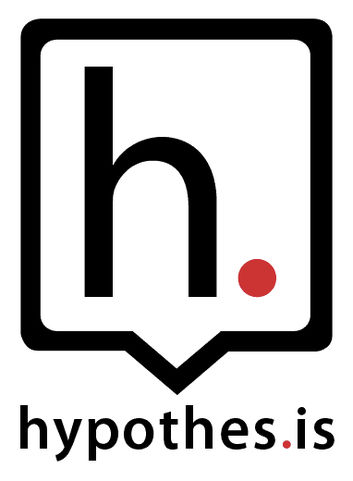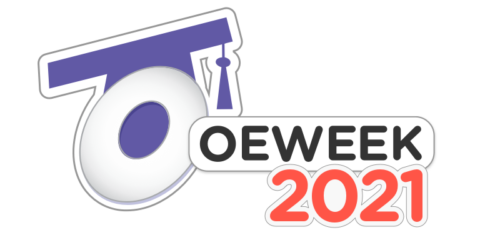
Hypothesis
Many courses are using Open Education Resources (OERs), websites, online articles or videos from YouTube as course materials instead of traditional textbooks. The low cost and high flexibility of these kinds of course materials make them favoured with learners and educators alike (Smith-Jaggars, Folk & Mullins, 2018).
But how can we ensure students are applying effective studying techniques or create opportunities for discussion about these materials? This is where social annotation tools, like Hypothesis, can help.
In this Post
- Getting Started
- Supporting Students
- Teaching with Hypothesis
- Setting up Group Work using Hypothesis
- Grading using Hypothesis
Getting Started
Hypothesis is integrated into eConestoga, but also can be added as a browser extension for use with any article or web page. Please know there are different options that can be customized to your teaching intents, so choose the option below that is the best fit for your context.
To add a Hypothesis-enabled reading or video in your course:
- Navigate to the module or section you’d like to add it to.
- Choose Existing Activities.
- Choose Hypothesis Reading.
- Then, choose the source of your reading or video. Be careful: the OneDrive integration is not yet working optimally.
Supporting Students
To support students who may be new to using Hypothesis, you can share the below resources:
- A student guide to Hypothesis in the LMS
- Annotation tips for students
- An Illustrated Guide to Annotation Types
- Using images, links, and videos in annotations
Alternatively, direct students to the Library’s Digital Skills Toolkit for additional help with Hypothesis.
Teaching with Hypothesis
Below we’ve collected some preliminary ideas about facilitating learning through social annotation. Try one in your classes, and let us know how it goes!
Hypothesis in different Teaching Modes
Although at first Hypothesis might seem to best fit with asynchronous or fully online teaching modes, it’s flexible enough to be used and reused in any mode of learning. The table below offers ideas for any mode.
| Mode | Suggestions |
|---|---|
| Asynchronous | Use Hypothesis as a supplement, complement, or alternative to other discussion forum activities. Use it to offer variety in the types of engagement built into the course, or to turn an individual reading or video watching activity into a collective one. Make observations about collective understandings. |
| Synchronous Online | Use Hypothesis as a supplement, complement, or alternative to other audience engagement techniques, such as adding comments to a chat window, ideas to a collaborative document, or responding to a Mentimeter presentation. Construct activities that allow time to read or watch the content, and discuss as small groups, leaving time to add their ideas directly to the Hypothesis-enabled reading or video. Make observations about collective understandings. |
| Synchronous In-Person | Use Hypothesis as a supplement, complement, or alternative to other audience engagement techniques, such as Think, Pair, Share, adding ideas to a document or chart paper, or using sticky notes to collect questions or ideas. Construct activities that allow time to read or watch the content, and discuss as small groups, leaving time to add their ideas directly to the Hypothesis-enabled reading or video. Make observations about collective understandings. |
| Hybrid | Consider having the Hypothesis-enabled reading assigned as part of the asynchronous time, and using synchronous class time to conduct some of the above or below proposed activities. |
Model Effective Study Habits
Conestoga’s Student Success team’s learning advisors recommend the SQ3R method of studying, and many of the strategies translate easily to teaching and learning activities.
- Survey: The format of the writing piece may be something that is newer for students. Point out elements of the reading that can help guide them, including headings, graphics, call-out boxes, or key terms. How are these used by people in industry or researchers? How might they help students?
- Question: Create learning activities where students pre-think about what they may already know about the topic (whether it’s correct or not). This could look like a brain dump or KWL chart. Refer to this throughout their learning in the unit or topic, pointing out correct observations and emerging changes to misperceptions.
- Read: Construct learning activities that invite students to re-read purposeful selections of a particular article. Consider using Active Reading Strategies to design these tasks.
- Recite: This doesn’t refer to repetitive read-alouds, but to having students summarize or restate their learning in their own words. Create learning tasks that require students to conduct active and ongoing summaries of articles, videos or chapters. These can be added as page notes using Hypothesis, or via other methods.
- Review: Create engaging ways to review content. Create activities that encourage students to return to their Hypothesis-enabled readings or videos and consult the discussions posted there. Invite them to create review questions for each other, and incorporate these into a game or follow up activity.
Add Guiding Questions
To introduce a tool like Hypothesis in your teaching, consider pre-populating a reading with some guiding questions. You can also guide students through the reading with your annotations, offering context and possible interpretations of the text or even helpful hints throughout.
Before, During and After Strategies
Use the Before, During, and After strategy to constructing activities to support reading or watching habits. Before having students read or watch a Hypothesis-enabled reading or video, create groups and ask them to create three questions about the topic, or three things they think they already know. Then, watch the video or offer enough time for students to read the article (or a selection from it based on their questions.) After, have the original groups sort through the questions or statements and see which they can answer or revise. Invite students to do this in small groups, if suitable. Consider using postings on the Hypothesis reading or video as exit tickets at the end of class, and bring back up in the next class.
Visual Glossaries
Have students look up difficult words or unknown allusions in a text and share their research as annotations. You can also have them add multimedia to their annotations to extend their understanding of complex concepts.
Problem-Based Learning (PBL) Cycle
You can also use Hypothes.is to support the research stage of a problem-based learning cycle or approach. Create groups, or encourage learners to create groups, and share these within your course.
Alternative Discussion Forum
Where a discussion centers around a course reading, use Hypothesis instead of a conventional discussion forum. Encourage students to participate by engaging with their discussions, and
Setting Up Group Work
Grade Student Submissions
If your course outline has some flexible assessments you can use Hypothesis-enabled readings as an assessed item. Alternatively, if your course has Hypothesis-enabled readings or videos as assessed items, this video can show you how to score them.
References
Smith Jaggars, S. Folk, A. & Mullins, D. (2018). Understanding students’ satisfaction with OERs as course materials. Performance Measurement and Metrics, 19(1), 66–74. Retrieved from https://doi.org/10.1108/PMM-12-2017-0059.






